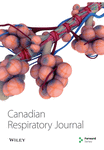Inspiratroy Capacity and Exercise Tolerance in Chronic Obstructive Pulmonary Disease
Abstract
During the past half-century, many studies have investigated the correlation of exercise tolerance to routine lung function in patients with obstructive pulmonary disease. In virtually all of these studies, the degree of airway obstruction was assessed in terms of forced expiratory volume in 1 s (FEV1) and forced vital capacity (FVC). Because in most studies only a weak correlation was found between exercise tolerance and degree of airway obstruction, it has been concluded that factors other than lung function impairment (eg, deconditioning and peripheral muscle dysfunction) play a predominant role in limiting exercise capacity in patients with chronic airway obstruction. Recent work, however, suggests that in patients with chronic obstructive pulmonary disease, the inspiratory capacity is a more powerful predictor of exercise tolerance than FEV1 and FVC.




